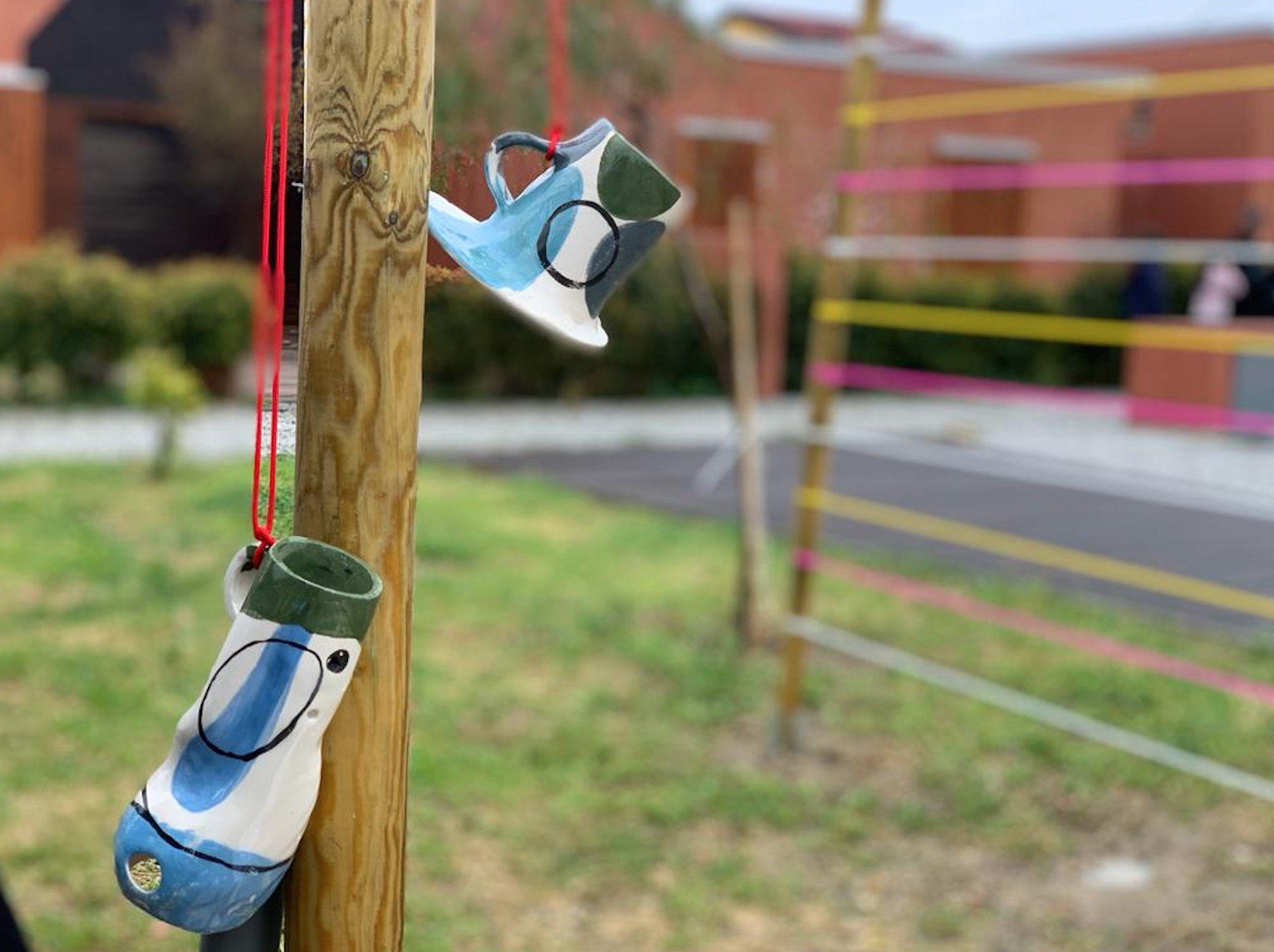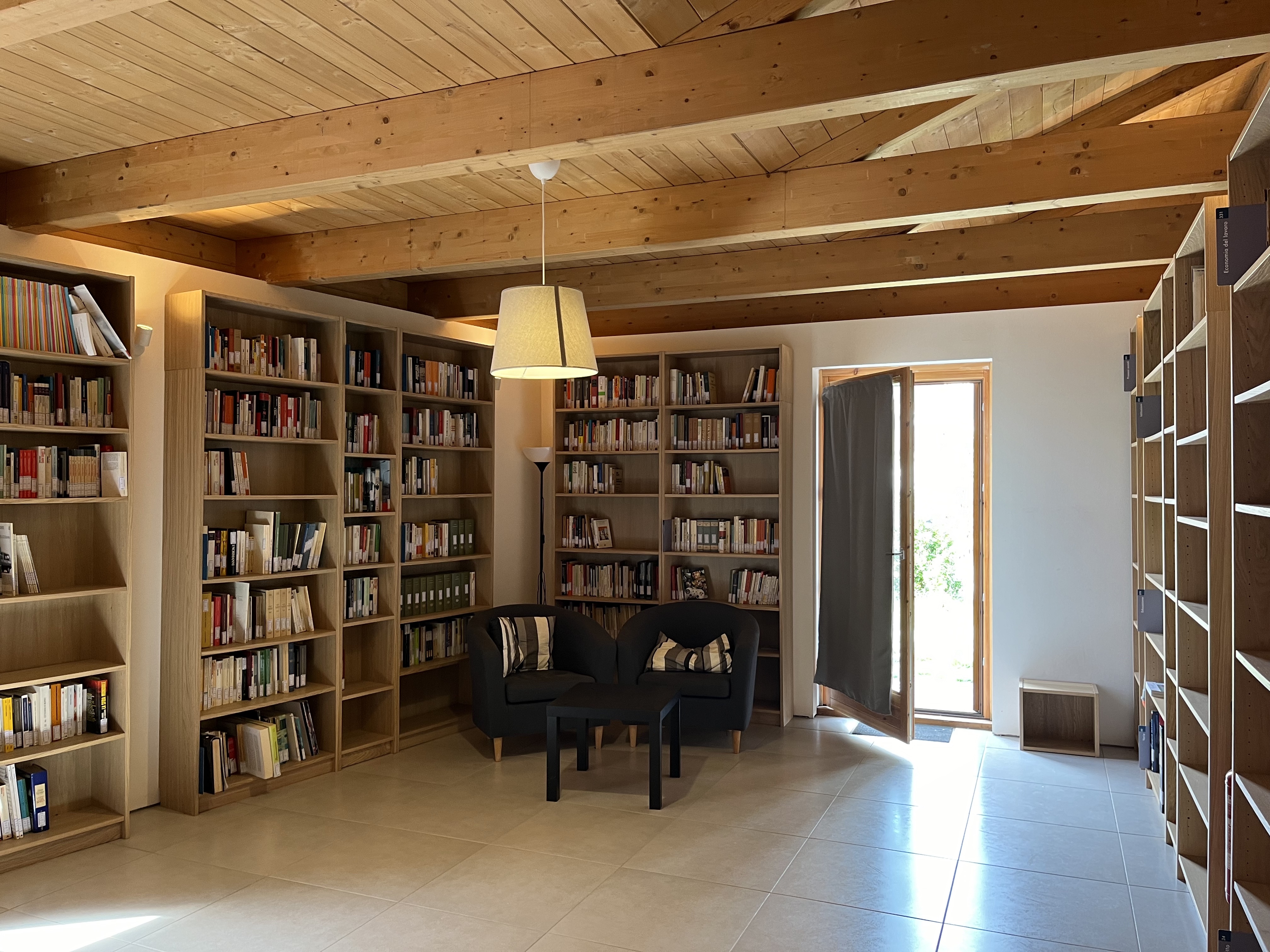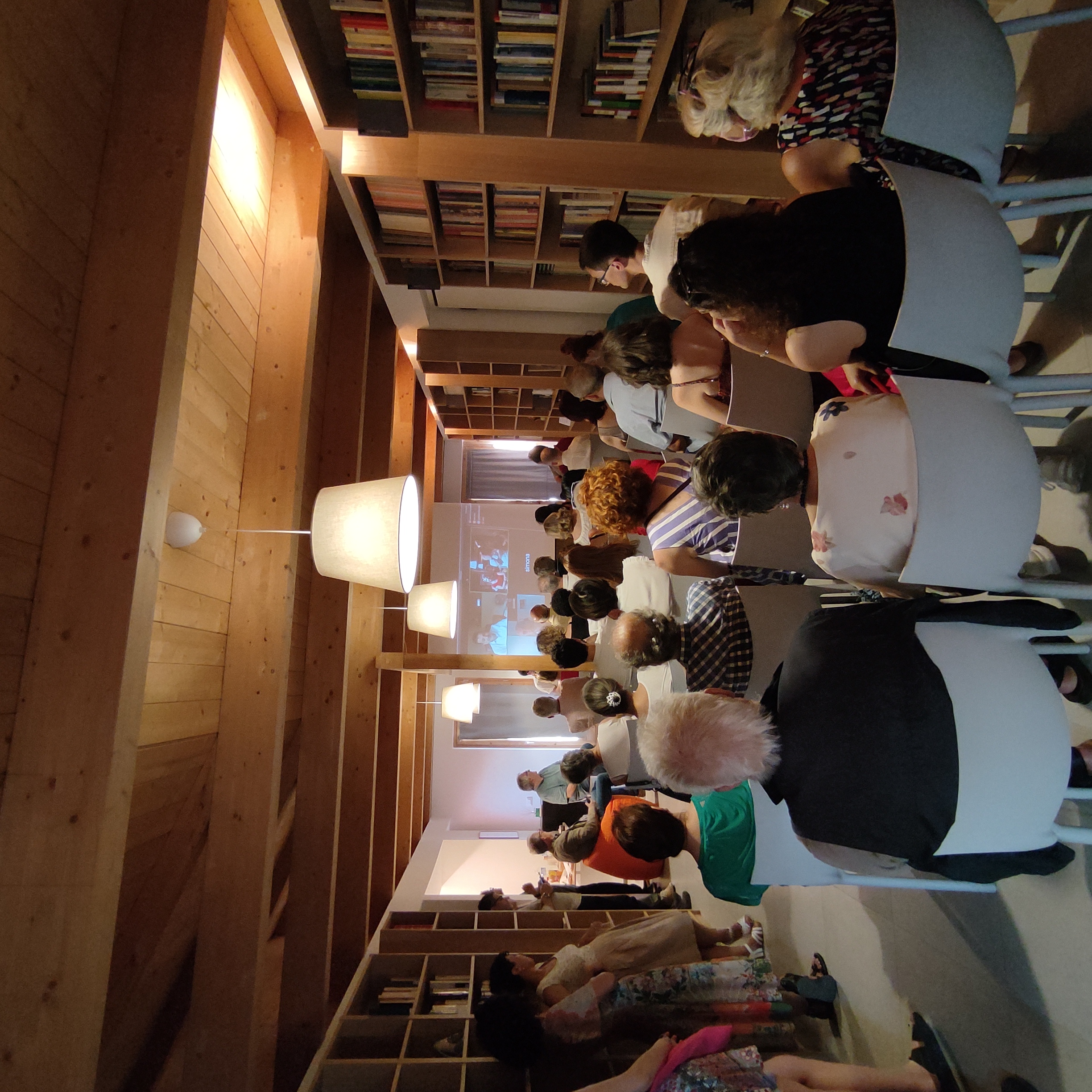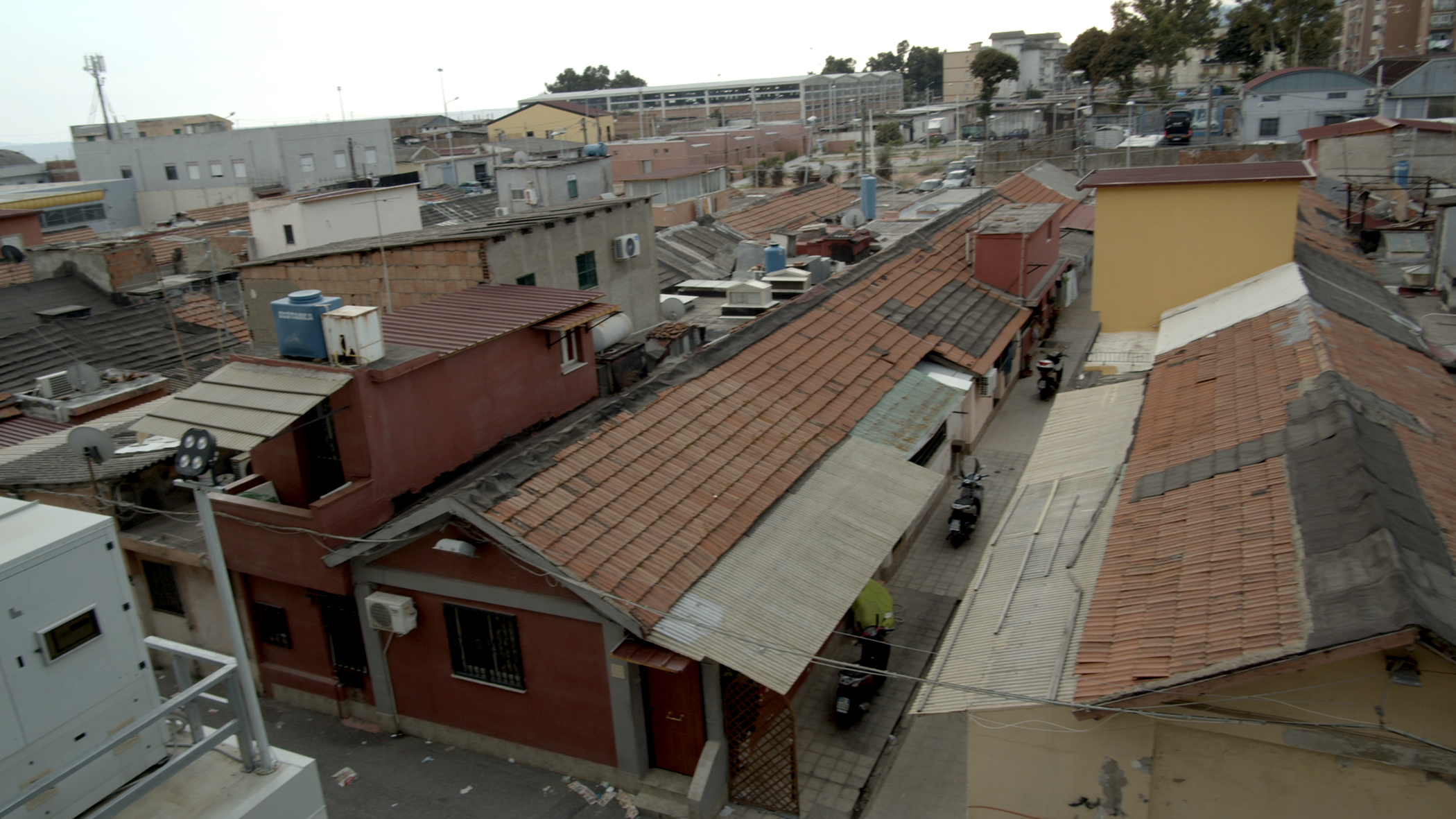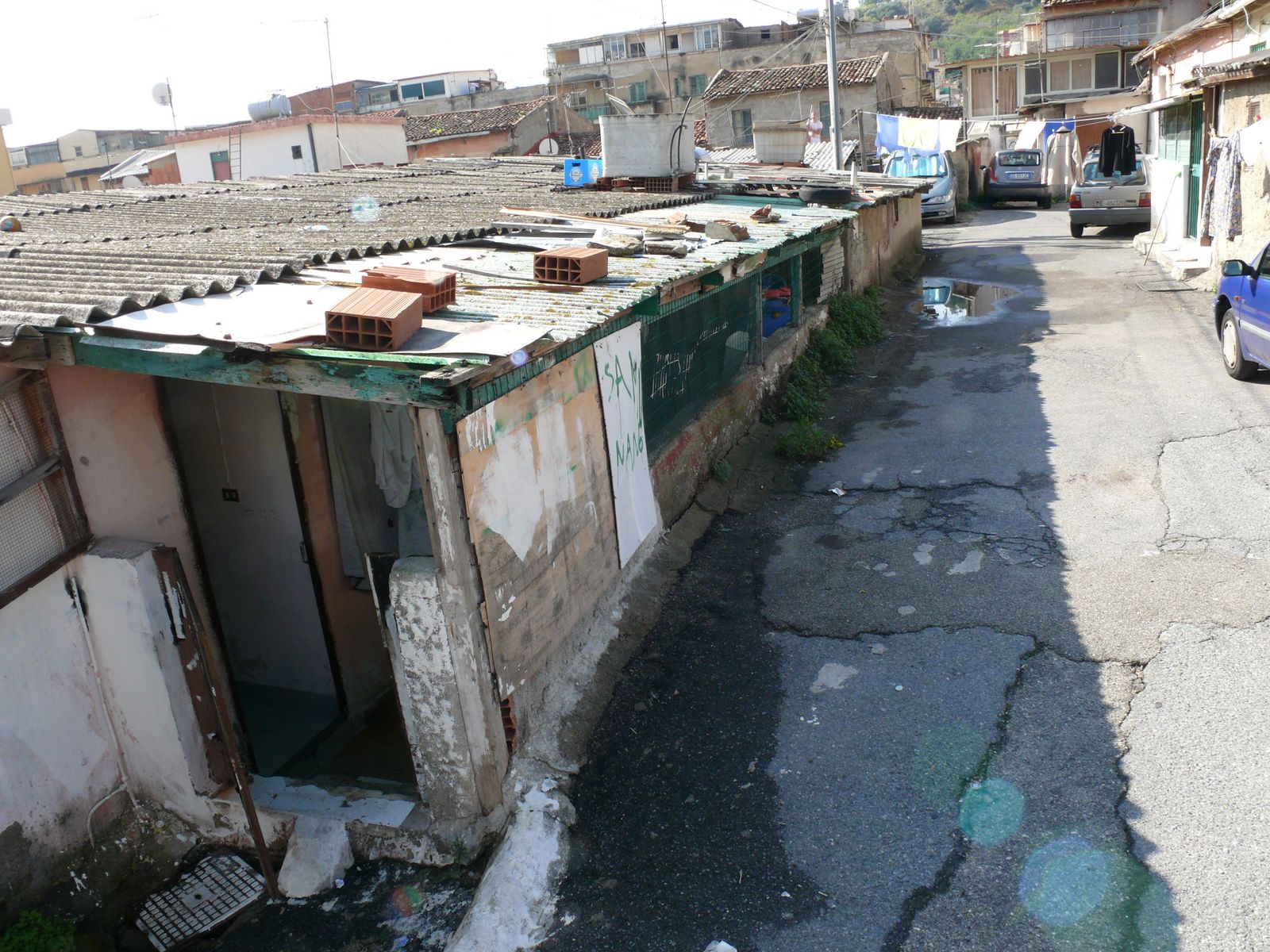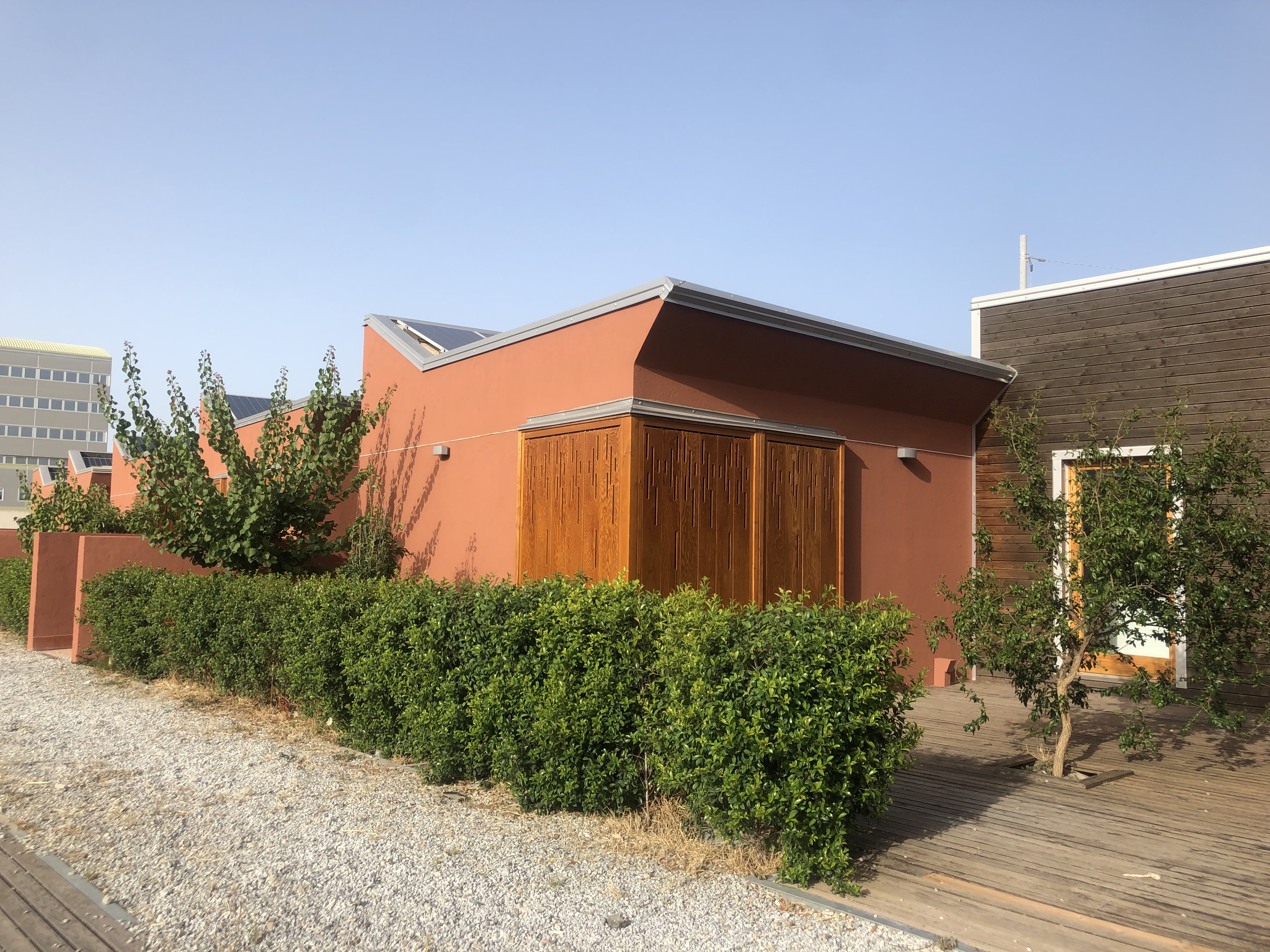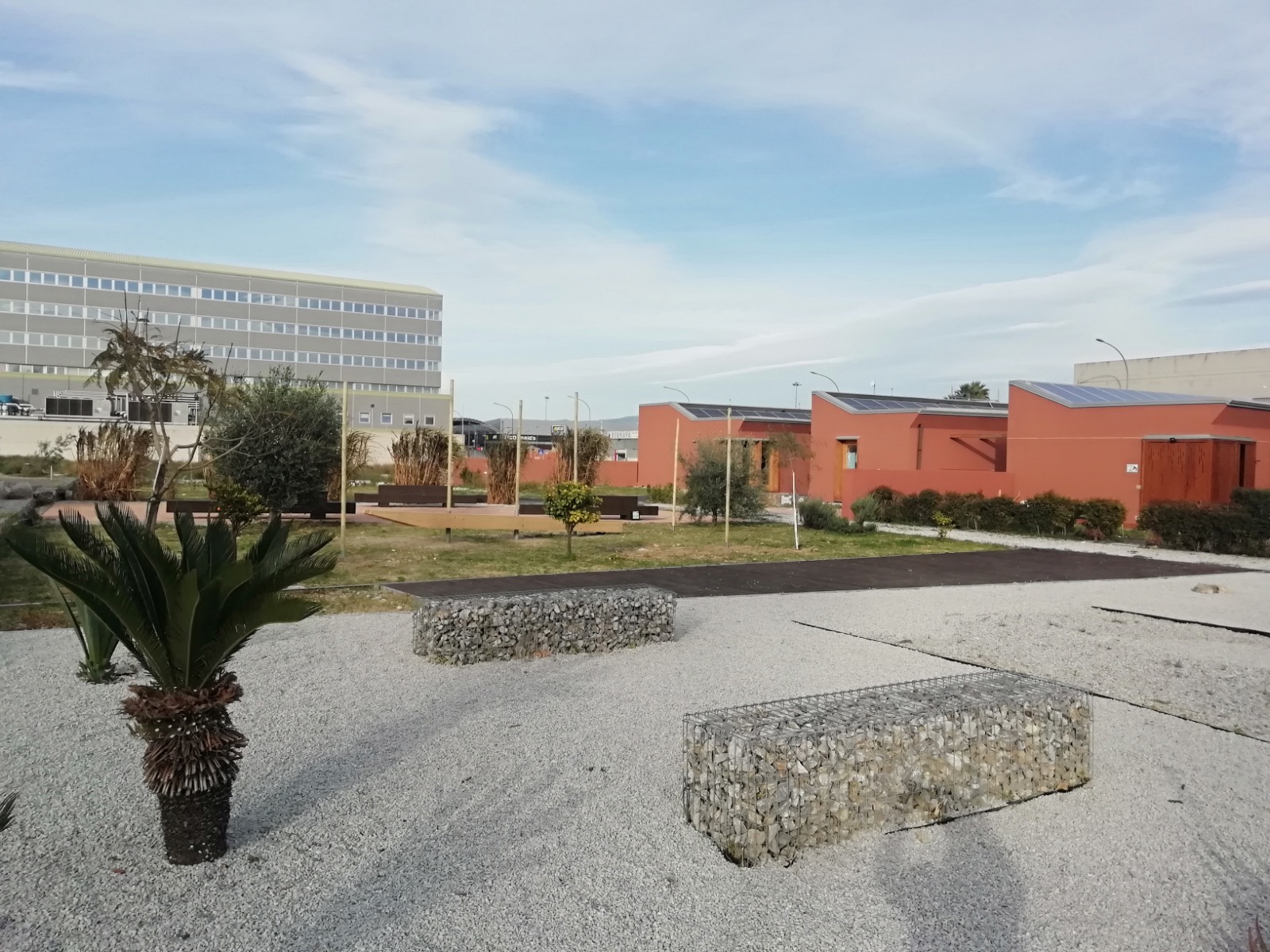Prioritising the places and people that need it the most
Capacity
{Empty}
Capacity transformed informal settlements in Messina, enabling 650 people to leave the slums and make autonomous choices across key life domains: housing, work, knowledge, and social life. It regenerated 24,000 m² into a public park, library, nursery, eco-sustainable housing, and a demo-site for energy self-sufficiency. By integrating social justice, sustainability, technology, and participatory governance, Capacity shifts from welfare dependency to sustainable urban development.
Italy
Local
Messina, Sicily - Italy
Mainly urban
It refers to a physical transformation of the built environment (hard investment)
Yes
2024-07-31
Yes
Horizon2020 / Horizon Europe
No
No
As a representative of an organisation
Capacity addressed the long-standing issue of informal settlements in Messina, where hundreds of families lived in extreme socio-economic exclusion, trapped in multidimensional poverty, with limited access to education, housing, and dignified work, and exposed to severe environmental and health risks exacerbated by climate change.
Inspired by complexity theories and Amartya Sen’s Capability Approach, the project expanded opportunities across housing, work, knowledge, and social life. Through participatory social mediation, Capacity empowered marginalized individuals to make informed choices, regenerating informal settlements and strengthening the local ecosystem.
Capacity improved housing conditions for 205 households, allowing 650 people to leave the slums for homes of their choice. The project regenerated 24,000 m² of urban land, Now a laboratory for sustainable urban living, Capacity creates a public park, library, and nursery. In the same area, a prototype horizontal condominium was built, consisting of six eco-friendly housing units, designed with sustainable architecture and advanced engineering materials. A demo-site for a Renewable Energy Community was established to address energy poverty and test fair energy distribution models.
The project demonstrates how urban regeneration restores dignity and beauty, transforming neglected spaces into people-centered environments where solutions were co-created with residents, ensuring voluntary transitions based on personal agency rather than imposed interventions.
Implemented by a multidisciplinary cluster led by Fondazione MeSSInA, the project engaged stakeholders at multiple levels, securing institutional support and replicability. By bridging social justice, environmental sustainability, and participatory governance, Capacity offers a scalable model for tackling poverty and climate change, promoting inclusive and sustainable urban development across Europe.
Inspired by complexity theories and Amartya Sen’s Capability Approach, the project expanded opportunities across housing, work, knowledge, and social life. Through participatory social mediation, Capacity empowered marginalized individuals to make informed choices, regenerating informal settlements and strengthening the local ecosystem.
Capacity improved housing conditions for 205 households, allowing 650 people to leave the slums for homes of their choice. The project regenerated 24,000 m² of urban land, Now a laboratory for sustainable urban living, Capacity creates a public park, library, and nursery. In the same area, a prototype horizontal condominium was built, consisting of six eco-friendly housing units, designed with sustainable architecture and advanced engineering materials. A demo-site for a Renewable Energy Community was established to address energy poverty and test fair energy distribution models.
The project demonstrates how urban regeneration restores dignity and beauty, transforming neglected spaces into people-centered environments where solutions were co-created with residents, ensuring voluntary transitions based on personal agency rather than imposed interventions.
Implemented by a multidisciplinary cluster led by Fondazione MeSSInA, the project engaged stakeholders at multiple levels, securing institutional support and replicability. By bridging social justice, environmental sustainability, and participatory governance, Capacity offers a scalable model for tackling poverty and climate change, promoting inclusive and sustainable urban development across Europe.
Capability approach
Socio-economic-environmental transition
Participatory urban regeneration
Housing
Ethical Finance
Capacity has transformed a highly degraded area into a laboratory for sustainable urban living solutions, demonstrating how social and environmental sustainability can be integrated into urban transformation to build long-term resilience for vulnerable communities.
The project adopted a multi-layered sustainability strategy. Before the intervention, the informal settlements consisted of precarious dwellings with asbestos roofs and no sewage system, exposing residents to severe health and environmental risks. Today, along with a public park, a library, and a nursery, the area hosts six eco-friendly housing units designed with low-impact materials such as wood and bio-based insulation, reducing carbon footprint and enhancing energy efficiency. The introduction of green spaces and climate-adapted structures mitigates extreme weather risks, reduces urban heat island effects, and improves air quality.
Instead of consuming new land, 205 families have been relocated into existing or regenerated homes, acquired through the private market and renovated, ensuring a zero land consumption approach.
A demo-site for a Renewable Energy Community was established to test fair energy distribution models. Funded through two Horizon projects, the system integrates an energy-sharing algorithm, co-designed by the Foundation and the National Research Council, prioritizing social equity over market-driven mechanisms. By analyzing residents’ income, health, and other factors, the algorithm ensures fair access to renewable energy, reducing energy poverty and fostering local energy resilience.
By embedding sustainability into housing, infrastructure, and energy governance, Capacity provides a replicable model for climate-responsive, socially just urban regeneration. The project demonstrates that sustainable development is not just an environmental necessity, but a catalyst for systemic change, ensuring that green innovation also fosters equity and inclusion.
The project adopted a multi-layered sustainability strategy. Before the intervention, the informal settlements consisted of precarious dwellings with asbestos roofs and no sewage system, exposing residents to severe health and environmental risks. Today, along with a public park, a library, and a nursery, the area hosts six eco-friendly housing units designed with low-impact materials such as wood and bio-based insulation, reducing carbon footprint and enhancing energy efficiency. The introduction of green spaces and climate-adapted structures mitigates extreme weather risks, reduces urban heat island effects, and improves air quality.
Instead of consuming new land, 205 families have been relocated into existing or regenerated homes, acquired through the private market and renovated, ensuring a zero land consumption approach.
A demo-site for a Renewable Energy Community was established to test fair energy distribution models. Funded through two Horizon projects, the system integrates an energy-sharing algorithm, co-designed by the Foundation and the National Research Council, prioritizing social equity over market-driven mechanisms. By analyzing residents’ income, health, and other factors, the algorithm ensures fair access to renewable energy, reducing energy poverty and fostering local energy resilience.
By embedding sustainability into housing, infrastructure, and energy governance, Capacity provides a replicable model for climate-responsive, socially just urban regeneration. The project demonstrates that sustainable development is not just an environmental necessity, but a catalyst for systemic change, ensuring that green innovation also fosters equity and inclusion.
Capacity has transformed a neglected and marginalized urban area into a people-centered environment, demonstrating how urban regeneration can restore dignity and beauty to historically excluded communities.
The area was marked by structural degradation, lack of basic services, and absence of green spaces. The regeneration process prioritized high-quality public spaces that foster community interaction, cultural engagement, and well-being. Today, it features a socio-educational center, a public park, a library, and a nursery, creating a welcoming and inclusive urban fabric that strengthens social cohesion.
The architectural design of the six new eco-friendly housing units incorporates aesthetically pleasing, bio-sustainable materials, blending harmoniously with the surrounding landscape and enhancing the sense of place for residents—particularly for former psychiatric inmates, who transitioned from a prison setting to a dignified home.
The transformation extends beyond individual buildings. The areas freed from informal settlements—24,000 sqm—have been turned into commons, reclaiming space for shared use, collective governance, and environmental regeneration. The value of this transformation has been further recognized with the selection of the site to host the “Mosaico delle Meraviglie”, a large-scale community artwork promoted by Birra Messina Cristalli di Sale. This project, created with contributions from local artists and residents, symbolizes the beauty, resilience, and identity of the renewed space, reinforcing the strong connection between place and community.
The Socio-Educational Center serves as a cultural hub, offering education, creative activities, and community initiatives to families, children, and former residents. This fosters a sense of belonging, turning the area into a place of shared experiences rather than mere infrastructure.
The area was marked by structural degradation, lack of basic services, and absence of green spaces. The regeneration process prioritized high-quality public spaces that foster community interaction, cultural engagement, and well-being. Today, it features a socio-educational center, a public park, a library, and a nursery, creating a welcoming and inclusive urban fabric that strengthens social cohesion.
The architectural design of the six new eco-friendly housing units incorporates aesthetically pleasing, bio-sustainable materials, blending harmoniously with the surrounding landscape and enhancing the sense of place for residents—particularly for former psychiatric inmates, who transitioned from a prison setting to a dignified home.
The transformation extends beyond individual buildings. The areas freed from informal settlements—24,000 sqm—have been turned into commons, reclaiming space for shared use, collective governance, and environmental regeneration. The value of this transformation has been further recognized with the selection of the site to host the “Mosaico delle Meraviglie”, a large-scale community artwork promoted by Birra Messina Cristalli di Sale. This project, created with contributions from local artists and residents, symbolizes the beauty, resilience, and identity of the renewed space, reinforcing the strong connection between place and community.
The Socio-Educational Center serves as a cultural hub, offering education, creative activities, and community initiatives to families, children, and former residents. This fosters a sense of belonging, turning the area into a place of shared experiences rather than mere infrastructure.
Capacity addressed extreme multidimensional poverty, where life expectancy was 5-7 years lower and wealth six times below city averages. Harsh living conditions—marked by overcrowding, unsafe structures, and lack of basic services—led to psychiatric disorders, exploitative labor, and criminal networks, further deepening exclusion.
The project dismantled systemic barriers by ensuring that inclusion was not limited to housing, but extended across key life domains: work, education, and social participation. Capacity challenged the status quo, ensuring that marginalized individuals were not passive beneficiaries but co-creators of solutions, with transitions that were voluntary and based on personal agency and informed decision-making. Women, despite social subordination, played an active role in this transformation, demonstrating how inclusive policies can unlock participation even in highly constrained contexts.
This approach marked a radical shift for many residents, who were accustomed to top-down decisions imposed within mafia-controlled dynamics, where real choice was absent. Rather than applying predefined policies, the project redefined inclusion through co-designed strategies that responded to individual needs and aspirations, ensuring affordability and accessibility while preventing gentrification and displacement.
Capacity demonstrates that true inclusion is not just about physical relocation, but about restoring agency and creating a shared sense of belonging. The project stands as an exemplary model of how urban transformation can drive systemic social change, ensuring that no one is left behind.
The project dismantled systemic barriers by ensuring that inclusion was not limited to housing, but extended across key life domains: work, education, and social participation. Capacity challenged the status quo, ensuring that marginalized individuals were not passive beneficiaries but co-creators of solutions, with transitions that were voluntary and based on personal agency and informed decision-making. Women, despite social subordination, played an active role in this transformation, demonstrating how inclusive policies can unlock participation even in highly constrained contexts.
This approach marked a radical shift for many residents, who were accustomed to top-down decisions imposed within mafia-controlled dynamics, where real choice was absent. Rather than applying predefined policies, the project redefined inclusion through co-designed strategies that responded to individual needs and aspirations, ensuring affordability and accessibility while preventing gentrification and displacement.
Capacity demonstrates that true inclusion is not just about physical relocation, but about restoring agency and creating a shared sense of belonging. The project stands as an exemplary model of how urban transformation can drive systemic social change, ensuring that no one is left behind.
Capacity placed community involvement at the core of its methodology, ensuring that beneficiaries were not just participants but decision-makers in shaping their own futures. The project engaged residents through a two-year social mediation process, combining individual consultations and collective meetings to tailor solutions to each family’s needs and vulnerabilities.
Many families had lived in informal settlements for decades, receiving false promises of relocation. Rebuilding trust was fundamental to success. Through personalized social mediation, families were supported in understanding their options and co-designing their transition, breaking a cycle of dependency and imposed solutions.
Social mediators personally reached out to all target individuals, explaining the opportunities available—covering housing, employment, education, and social participation—and providing continuous support, enabling people to make informed, autonomous choices.
Regarding housing solutions, families had two options: public housing allocation, provided by local authorities, or direct home purchase, supported by a one-time financial contribution, requiring a 20% co-payment, which families could cover through ethical finance instruments facilitated by the project. This second option was chosen by 69 families, with 100% of participants reporting improved future life expectations.
The initiative ensured that the project was not just about regeneration and relocation, but about restoring agency, dignity, and long-term social integration. The experience demonstrates how social mediation can be a transformative tool in urban regeneration, fostering inclusion, and strengthening social cohesion.
Many families had lived in informal settlements for decades, receiving false promises of relocation. Rebuilding trust was fundamental to success. Through personalized social mediation, families were supported in understanding their options and co-designing their transition, breaking a cycle of dependency and imposed solutions.
Social mediators personally reached out to all target individuals, explaining the opportunities available—covering housing, employment, education, and social participation—and providing continuous support, enabling people to make informed, autonomous choices.
Regarding housing solutions, families had two options: public housing allocation, provided by local authorities, or direct home purchase, supported by a one-time financial contribution, requiring a 20% co-payment, which families could cover through ethical finance instruments facilitated by the project. This second option was chosen by 69 families, with 100% of participants reporting improved future life expectations.
The initiative ensured that the project was not just about regeneration and relocation, but about restoring agency, dignity, and long-term social integration. The experience demonstrates how social mediation can be a transformative tool in urban regeneration, fostering inclusion, and strengthening social cohesion.
The project integrates public institutions, social enterprises, academia, and ethical finance, demonstrating how multi-level partnerships can drive long-term sustainability, social equity, and replicability.
Capacity was initially developed through a public-private partnership, led by the Municipality of Messina and Fondazione MeSSInA. The project was financed with approximately €18 million from the National Urban Periphery Redevelopment Program. Following a public call, stakeholders were selected to co-design and implement the initiative, ensuring a multi-level, multi-sectoral governance model. The co-design phase involved a cluster of social enterprises affiliated with Fondazione MeSSInA. Other key actors included the University of Messina, the European network REVES, and SEFEA Impact, an impact investment fund who played a critical role in mobilizing financial resources for project implementation. At the European level, the project benefited from two Horizon-funded initiatives. NESOI and HYBRIS facilitated la realizzazione del demo-site e il percorso verso l’autosufficienza energetica. These collaborations enhanced the project’s technological innovation and replicability within the EU’s sustainability framework.
Additionally, various third-sector organizations were involved in the implementation phases.
Capacity was initially developed through a public-private partnership, led by the Municipality of Messina and Fondazione MeSSInA. The project was financed with approximately €18 million from the National Urban Periphery Redevelopment Program. Following a public call, stakeholders were selected to co-design and implement the initiative, ensuring a multi-level, multi-sectoral governance model. The co-design phase involved a cluster of social enterprises affiliated with Fondazione MeSSInA. Other key actors included the University of Messina, the European network REVES, and SEFEA Impact, an impact investment fund who played a critical role in mobilizing financial resources for project implementation. At the European level, the project benefited from two Horizon-funded initiatives. NESOI and HYBRIS facilitated la realizzazione del demo-site e il percorso verso l’autosufficienza energetica. These collaborations enhanced the project’s technological innovation and replicability within the EU’s sustainability framework.
Additionally, various third-sector organizations were involved in the implementation phases.
Capacity was implemented by the EU-recognized Cluster of Social and Environmental Innovation, led by Fondazione MeSSInA, integrating expertise from housing, energy, finance, technology, and culture. This transdisciplinary collaboration was crucial in addressing poverty’s multidimensional nature and designing holistic, sustainable solutions. The Cluster operates through a quadruple-helix model, actively involving social economy actors, public authorities, academia, and local communities. This structure enabled continuous knowledge exchange and cross-sectoral innovation, ensuring that interventions were deeply rooted in local needs while leveraging scientific and institutional expertise.
The project integrated housing solutions tailored to social reintegration, ensuring that new dwellings were not just places to live but enablers of autonomy and inclusion. Sustainable energy innovation played a key role, with the development of patented renewable technologies and a Solidarity Renewable Energy Community, co-designed with research institutions to optimize equitable energy distribution. Financial tools such as microcredit and ethical investment models provided economic stability and empowerment beyond relocation, reinforcing the project’s systemic impact. Cultural and educational initiatives, such as the Socio-Educational Center, fostered community cohesion, intergenerational learning, and economic opportunities, ensuring that the social transformation was long-lasting.
This cross-sectoral collaboration ensured that Capacity was not a set of isolated interventions, but an integrated system, where each component reinforced the others. By embedding transdisciplinary interaction at every stage, Capacity demonstrated how urban regeneration can move beyond infrastructure to create resilient, self-sustaining communities, setting a replicable model for tackling exclusion through systemic change.
The project integrated housing solutions tailored to social reintegration, ensuring that new dwellings were not just places to live but enablers of autonomy and inclusion. Sustainable energy innovation played a key role, with the development of patented renewable technologies and a Solidarity Renewable Energy Community, co-designed with research institutions to optimize equitable energy distribution. Financial tools such as microcredit and ethical investment models provided economic stability and empowerment beyond relocation, reinforcing the project’s systemic impact. Cultural and educational initiatives, such as the Socio-Educational Center, fostered community cohesion, intergenerational learning, and economic opportunities, ensuring that the social transformation was long-lasting.
This cross-sectoral collaboration ensured that Capacity was not a set of isolated interventions, but an integrated system, where each component reinforced the others. By embedding transdisciplinary interaction at every stage, Capacity demonstrated how urban regeneration can move beyond infrastructure to create resilient, self-sustaining communities, setting a replicable model for tackling exclusion through systemic change.
Capacity represents a paradigm shift in urban regeneration, moving beyond mainstream approaches that often focus on physical relocation and basic service provision without addressing the systemic causes of exclusion. Instead, the project integrates economic, environmental, and governance innovation, ensuring that regeneration is not just about infrastructure but about restoring agency, dignity, and long-term autonomy.
Unlike conventional interventions, which typically impose standardized solutions, Capacity co-designed interventions with residents, ensuring transitions were voluntary and adapted to personal agency. While mainstream projects focus solely on housing, Capacity integrated housing, energy, finance, and social participation, recognizing that poverty is multidimensional. Traditional regeneration efforts often fail to prevent gentrification and displacement, whereas Capacity adopted commons-based governance, ensuring that reclaimed spaces remained affordable, accessible, and collectively managed. Energy justice is frequently overlooked in urban policies, yet Capacity pioneered a community-driven renewable energy model, integrating patented solutions and social equity algorithms to prioritize vulnerable groups.
This model is particularly groundbreaking in Messina, where informal settlements have persisted for over a century since the 1908 earthquake, with no previous systemic intervention addressing their root causes. Capacity stands as the first and only comprehensive initiative in this historical context, breaking a cycle of marginalization and temporary solutions that had endured for generations.
Unlike conventional interventions, which typically impose standardized solutions, Capacity co-designed interventions with residents, ensuring transitions were voluntary and adapted to personal agency. While mainstream projects focus solely on housing, Capacity integrated housing, energy, finance, and social participation, recognizing that poverty is multidimensional. Traditional regeneration efforts often fail to prevent gentrification and displacement, whereas Capacity adopted commons-based governance, ensuring that reclaimed spaces remained affordable, accessible, and collectively managed. Energy justice is frequently overlooked in urban policies, yet Capacity pioneered a community-driven renewable energy model, integrating patented solutions and social equity algorithms to prioritize vulnerable groups.
This model is particularly groundbreaking in Messina, where informal settlements have persisted for over a century since the 1908 earthquake, with no previous systemic intervention addressing their root causes. Capacity stands as the first and only comprehensive initiative in this historical context, breaking a cycle of marginalization and temporary solutions that had endured for generations.
The complex and multidimensional nature of poverty in Messina’s informal settlements required moving beyond traditional, sectoral approaches. Capacity adopted an ecosystemic strategy, explicitly inspired by complexity theories and Amartya Sen’s Capability Approach, integrating economic, environmental, financial, and governance actions to build long-term resilience.
Messina’s most degraded urban areas served as a natural laboratory for testing structural, socio-economic, and environmental solutions. The project was conceived as a systemic shock, designed not for short-term interventions but to reshape local development by strengthening social and economic infrastructure.
The methodology is structured around four transformative paradigms. The Knowledge Paradigm fosters transdisciplinary collaboration, bridging social sciences, urban planning, energy transition, and finance to co-design solutions tailored to community needs. The Economic Paradigm challenges profit-driven models, instead promoting ethical finance, social capital, and environmental sustainability to expand substantial freedoms. The Technological Paradigm integrates patented renewable energy technologies, community-led governance, and bio-material innovations to support the green and just transition. In collaboration with global research institutions, the project developed decentralized energy solutions, prioritizing vulnerable households. The Governance Paradigm moves beyond top-down decision-making, fostering participatory governance and self-determination. The 24,000 sqm freed from informal settlements has been transformed into commons, ensuring long-term community stewardship rather than speculative development.
By integrating these paradigms, Capacity demonstrates that urban regeneration is not just about infrastructure but about reshaping power structures and governance, providing a scalable framework for sustainable urban transformation.
Messina’s most degraded urban areas served as a natural laboratory for testing structural, socio-economic, and environmental solutions. The project was conceived as a systemic shock, designed not for short-term interventions but to reshape local development by strengthening social and economic infrastructure.
The methodology is structured around four transformative paradigms. The Knowledge Paradigm fosters transdisciplinary collaboration, bridging social sciences, urban planning, energy transition, and finance to co-design solutions tailored to community needs. The Economic Paradigm challenges profit-driven models, instead promoting ethical finance, social capital, and environmental sustainability to expand substantial freedoms. The Technological Paradigm integrates patented renewable energy technologies, community-led governance, and bio-material innovations to support the green and just transition. In collaboration with global research institutions, the project developed decentralized energy solutions, prioritizing vulnerable households. The Governance Paradigm moves beyond top-down decision-making, fostering participatory governance and self-determination. The 24,000 sqm freed from informal settlements has been transformed into commons, ensuring long-term community stewardship rather than speculative development.
By integrating these paradigms, Capacity demonstrates that urban regeneration is not just about infrastructure but about reshaping power structures and governance, providing a scalable framework for sustainable urban transformation.
Capacity is designed as a replicable and adaptable model for tackling multidimensional poverty, social exclusion, and environmental vulnerability. Its ecosystemic approach, which integrates housing, energy, economic innovation, and participatory governance, provides scalable solutions that can be applied in diverse urban and regional contexts.
The project demonstrates high transferability through technological innovation in construction and energy. It has developed and tested low-impact, bio-sustainable construction materials and renewable energy solutions, including the Solidarity Renewable Energy Community model. Supported by an energy-sharing algorithm, this model optimizes equitable energy distribution and can be adapted to different socio-economic contexts.
Capacity is also grounded in Amartya Sen’s Capability Approach, proving that interventions aimed at fostering autonomy rather than dependency are sustainable from both a social and economic perspective. This methodology can be replicated in other marginalized and poor urban areas.
The project’s scientific research and knowledge dissemination further strengthen its scalability. Multiple peer-reviewed publications document its methodology and impact, supporting knowledge-sharing among policymakers, researchers, and practitioners. This ensures that Capacity’s approach can be adapted and implemented in different European and global contexts.
Additionally, the network of national and international collaborations established by Fondazione MeSSInA, including its cooperation with other European Clusters of Social and Economic Innovation, enhances the project’s replication potential. By fostering alliances between social enterprises, research institutions, and public authorities, Capacity provides a framework for urban transformation that can be tailored to different territories while maintaining its core principles of sustainability, inclusion, and resilience.
The project demonstrates high transferability through technological innovation in construction and energy. It has developed and tested low-impact, bio-sustainable construction materials and renewable energy solutions, including the Solidarity Renewable Energy Community model. Supported by an energy-sharing algorithm, this model optimizes equitable energy distribution and can be adapted to different socio-economic contexts.
Capacity is also grounded in Amartya Sen’s Capability Approach, proving that interventions aimed at fostering autonomy rather than dependency are sustainable from both a social and economic perspective. This methodology can be replicated in other marginalized and poor urban areas.
The project’s scientific research and knowledge dissemination further strengthen its scalability. Multiple peer-reviewed publications document its methodology and impact, supporting knowledge-sharing among policymakers, researchers, and practitioners. This ensures that Capacity’s approach can be adapted and implemented in different European and global contexts.
Additionally, the network of national and international collaborations established by Fondazione MeSSInA, including its cooperation with other European Clusters of Social and Economic Innovation, enhances the project’s replication potential. By fostering alliances between social enterprises, research institutions, and public authorities, Capacity provides a framework for urban transformation that can be tailored to different territories while maintaining its core principles of sustainability, inclusion, and resilience.
Cities play a key role in addressing climate change and social inequalities, and urban regeneration is now recognized as a central strategy for sustainable development. Restoring degraded neighborhoods through ecological transition, while limiting urban sprawl and land consumption, aligns with the objectives of sustainable cities.
The European Economic and Social Committee emphasizes the need for an integrated approach, as ordinary measures are considered inefficient. The EU Structural Funds 2021–2027 mandate Sustainable Urban Development (SUD) as a multisectoral, multilevel, and community-led strategy, proving that urban transformation must be locally tailored but globally scalable.
Capacity provides innovative local solutions to global challenges, integrating urban regeneration, energy justice, and social inclusion to tackle multidimensional poverty and climate change. The project aligns with multiple SDGs. By ensuring affordable housing, ethical finance tools, and economic autonomy, it addresses SDG 1 (No Poverty). It contributes to SDG 7 (Affordable and Clean Energy) through the Solidarity Renewable Energy Community model, which promotes decentralized, community-led renewable energy solutions prioritizing vulnerable groups.
Capacity embodies SDG 11 (Sustainable Cities and Communities) by transforming informal settlements into inclusive, climate-adaptive urban spaces, preventing gentrification and displacement, and ensuring long-term community control over regenerated areas. The project also advances SDG 13 (Climate Action) by reducing carbon emissions, increasing climate resilience, and fostering energy autonomy. Furthermore, by embedding participatory governance and the Capability Approach, Capacity supports SDG 10 (Reduced Inequalities), empowering marginalized individuals, particularly women and vulnerable groups, to co-design their own life transitions.
The European Economic and Social Committee emphasizes the need for an integrated approach, as ordinary measures are considered inefficient. The EU Structural Funds 2021–2027 mandate Sustainable Urban Development (SUD) as a multisectoral, multilevel, and community-led strategy, proving that urban transformation must be locally tailored but globally scalable.
Capacity provides innovative local solutions to global challenges, integrating urban regeneration, energy justice, and social inclusion to tackle multidimensional poverty and climate change. The project aligns with multiple SDGs. By ensuring affordable housing, ethical finance tools, and economic autonomy, it addresses SDG 1 (No Poverty). It contributes to SDG 7 (Affordable and Clean Energy) through the Solidarity Renewable Energy Community model, which promotes decentralized, community-led renewable energy solutions prioritizing vulnerable groups.
Capacity embodies SDG 11 (Sustainable Cities and Communities) by transforming informal settlements into inclusive, climate-adaptive urban spaces, preventing gentrification and displacement, and ensuring long-term community control over regenerated areas. The project also advances SDG 13 (Climate Action) by reducing carbon emissions, increasing climate resilience, and fostering energy autonomy. Furthermore, by embedding participatory governance and the Capability Approach, Capacity supports SDG 10 (Reduced Inequalities), empowering marginalized individuals, particularly women and vulnerable groups, to co-design their own life transitions.
The Capacity project has achieved significant and measurable results, improving housing conditions, fostering climate resilience, and strengthening local economic development.
The project successfully carried out the climate-resilient regeneration of 24,000 sqm of former informal settlements, providing safe, dignified housing for 205 households (approximately 650 people). Through an innovative approach to housing acquisition and rehabilitation, 69 homes (covering 2,500 sqm) were purchased and regenerated on the private market, preventing new land consumption. The one-time contribution model for direct house purchases led to a 35% reduction in real estate costs, compared to municipal house purchase and assignment models. Importantly, 100% of participants who opted for direct purchase reported improved future life expectations.
Capacity also introduced ethical finance tools to foster economic stability and self-sufficiency. Microcredits were provided to 14 households to enhance work conditions, while 38 households received financial support for debt restructuring and home purchase. The project further strengthened the local social economy cluster, supporting 11 new entrepreneurial activities and reinforcing community-driven economic regeneration.
The project's impact has been scientifically documented in multiple peer-reviewed publications and recognized at a national level. In 2022, the project was awarded at the Italian Exhibition of CSR and Social Innovation for its transformative contributions to urban regeneration and social inclusion.
The project successfully carried out the climate-resilient regeneration of 24,000 sqm of former informal settlements, providing safe, dignified housing for 205 households (approximately 650 people). Through an innovative approach to housing acquisition and rehabilitation, 69 homes (covering 2,500 sqm) were purchased and regenerated on the private market, preventing new land consumption. The one-time contribution model for direct house purchases led to a 35% reduction in real estate costs, compared to municipal house purchase and assignment models. Importantly, 100% of participants who opted for direct purchase reported improved future life expectations.
Capacity also introduced ethical finance tools to foster economic stability and self-sufficiency. Microcredits were provided to 14 households to enhance work conditions, while 38 households received financial support for debt restructuring and home purchase. The project further strengthened the local social economy cluster, supporting 11 new entrepreneurial activities and reinforcing community-driven economic regeneration.
The project's impact has been scientifically documented in multiple peer-reviewed publications and recognized at a national level. In 2022, the project was awarded at the Italian Exhibition of CSR and Social Innovation for its transformative contributions to urban regeneration and social inclusion.

